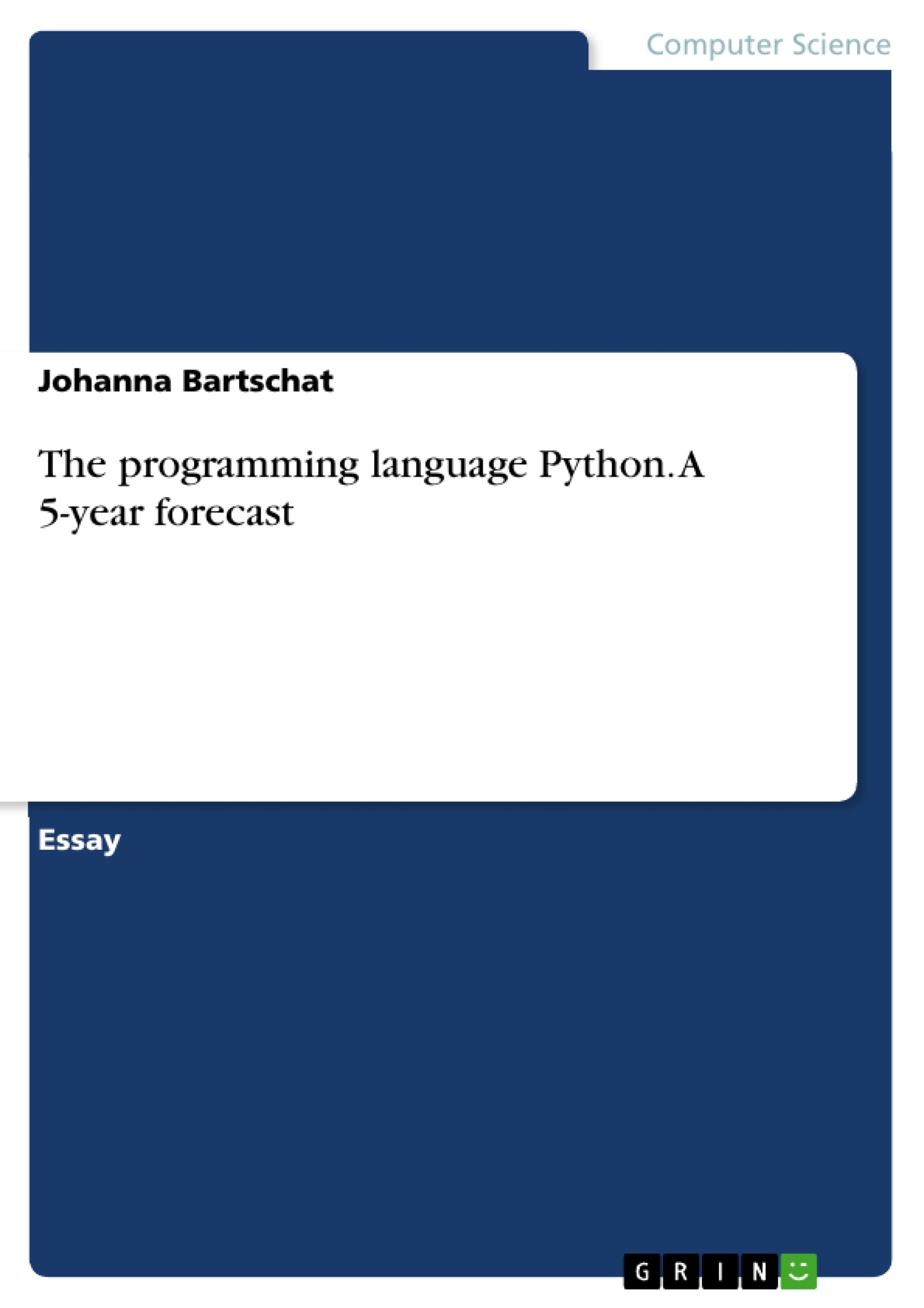This argumentative essay deals with the statement that Python will continue to be in the top four programming languages of the TIOBE ranking for the next five years. The Python programming language is one of the most popular in the world. This text analyses the evolution and power of Python, as well as its competition. It also places Python in the context of IT trends such as artificial intelligence, big data and metaverse. The text concludes with an outlook.
Hardly any programming language has shown such a meteoric rise since the language was introduced as Python. The growth in the language's popularity is particularly visible in the line graph from TIOBE, which represents the Programming Community Index. The popularity of ten programming languages over a period of 20 years is shown. A list of all relevant coding languages is ranked in percent to determine their market share.
Inhaltsverzeichnis (Table of Contents)
- Evolution of Python
- Power of Python
- Python's Competition
- Is Python now being replaced by Julia?
- What's now, what will be?
- Artificial Intelligence
- Big Data
- Metaverse
- The next five years
Zielsetzung und Themenschwerpunkte (Objectives and Key Themes)
This argumentative essay examines the statement that Python will remain within the top four programming languages in the TIOBE ranking for the next five years. It analyzes the language's growth, versatility, and future prospects in relation to emerging trends like artificial intelligence, big data, and the metaverse.
- Python's rapid rise in popularity and dominance in the TIOBE rankings
- Python's versatility and applicability across diverse areas of computer science
- The role of emerging technologies like artificial intelligence, big data, and the metaverse in shaping the future of programming languages
- Python's advantages and strengths in these evolving fields
- The potential for Python to maintain its position among the top programming languages in the coming years
Zusammenfassung der Kapitel (Chapter Summaries)
The essay begins by highlighting the remarkable growth of Python's popularity, evidenced by its climb from a minor player in 2002 to the top of the TIOBE rankings today. It then delves into Python's multifaceted strengths, emphasizing its versatility across various domains of computer science, from web development to game development. The essay explores Python's competitive landscape, acknowledging the existence of other programming languages but ultimately asserting Python's unique advantage as a universal tool. The essay addresses the question of whether Python is being replaced by Julia, concluding that Julia's current market share is too small to pose a significant threat.
The essay then turns to the future of computer science, highlighting the transformative impact of artificial intelligence, big data, and the metaverse. It details how Python's characteristics, such as its ease of learning, extensive libraries, and adaptability, make it a strong contender for dominance in these fields. The essay concludes by reiterating Python's current dominance and its ability to maintain its position as a leading programming language in the next five years.
Schlüsselwörter (Keywords)
The essay focuses on the programming language Python, its history, its strengths, and its relevance to emerging technologies like artificial intelligence, big data, and the metaverse. It explores Python's popularity in the TIOBE rankings and its potential to remain a dominant force in the future of computer science. Other key topics include Python's versatility, its competition with other languages like Julia, and its role in facilitating data visualization and rapid development.
- Quote paper
- Johanna Bartschat (Author), 2022, The programming language Python. A 5-year forecast, Munich, GRIN Verlag, https://www.grin.com/document/1446281




